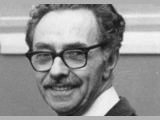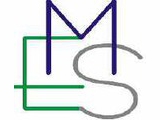Kurzbiografien, Stationslisten und weitere Informationen
(noch in Arbeit)
Floyd E. Becker W6RJY XAAP: "It was great to to go to the website to see my old card. I had even forgotten that that particular design existed. When I returned home with a long log of contacts, I had a better card printed. - I was a Lt. in the Signal Corps. I had a team that installed the comm. equipment for Army Airways Comm. Serv. (AACS) a unit of the Army Air Corps. As part of the installation we had 3 curtain rhombics pointing to Rome and to Cairo. They were intended for RTTY but the Rome ant. put a nice beam right over the States. I was able to talk to my Aunt and Uncle in Sacramento, CA. All I had to do was put out a test signal and it seemed like the whole band came back calling. A real let down when I got home with my homebrew stuff. - I have copies of several of the orders that let the military get on Ham radio after the war. The first was an order dated 11 Sept. 1945 (another 9/11). It came from the Air Corps and as of that date only authorized 112-115.5 mcs. (2 1/2 meters).The word didn't get to us until 23 Oct. 45. The authorization came to my good friend, Capt. Charles Peters, who headed up the AACS attachment. Others used XAAP but I was the lucky guy who used it most. - I still am on the air and have an Army MARS net. But I must hide my antenna in the attic. I have attached a copy of one of the orders. -- Many of the restrictions listed in these orders were relaxed shortly after the date shown. More frequencies and more power were allowed. "
(via Tony Ricicky W2VRK, 07. Dec. 2001)
XAFQ: "XAFQ, a newcomer GI station in northern Italy, can be QSLed to 350th Infantry Regiment APO 88, c/o PM New York City" (QST, June 1947, p59)
XAAJ: The XA calls in Italy were issued in 1946 by AMG (Allied Military Government). We were only allowed to operate on 10 meters. Fortunately, 10 meters was wide open at that time, so that it was quite easy to work into the U.S. At XAAJ, we used a BC-610 transmitter, doubling in the final from 20 meters, and a Hallicrafters SX-28 receiver. I designed the QSL card for XAAJ. It was printed in medium dark blue.
(Bob Stein, W6NBI, ex-W2LWK, ex-XAAJ, E-Mail, Oct. 2003)
XADK:I was with the 977 Signal Bat'n stationed at Caeserta Italy in 1944-45. My call was XADK. That xmtr we built then was a pair of 250th's in push-pull bread-board fashion; modulated by two other big bottles. My call in the states then was W2JRP. I became W2JB back in 1972 after I got back on the air after a 20 years' absence in 1968. We erected a 2 section W8JK 20 meter array that put down quite a signal in the states. In the spring of 1945 I was sent over the Athens , Greece as part of the AMFOGE Mission (Allied Mission For the Observation of Greek Elections). We had to set up BC-610 all over the country to prepare for the election day. My call in Athens was XACR. We used a spare BC-610 and a dipole there. I think it was in the Nov or Dec issue of the 1946 QST they had a write-up on XADK with pictures of the Xmtr, Rcvr's etc.
(John Bugio W2JB, ex-XADK, XACR, E-Mail, Oct.2003)
XAEX: The XA-series of ham radio call signs probably began with the end of WWII when the air waves again became available for amateur use. They were authorized by the Theater Signal Officer acting for the Theater Commander upon application by the would-be ham operator. The equipment could be either military radio gear not in military use at the moment or gear that was hand-assembled from parts. The object was to improve morale and recreation. The end of the series probably was synonymous with the end of the occupation of the given countries in which the radio equipment was located, at which time they regained sovereignty over their own air waves and the issuance of their national call signs.
I applied and was authorized the call sign, XAEX. My mentor was 1st Lieutenant Ken Cushing, a radio engineer of Massachusetts who held another XA call sign. A typical set-up was a military BC610 radio transmitter and a Hallicrafter or Hammerlund receiver, but other configurations were also in use. We used ham radio to connect with amateurs all over the world, and many friendships evolved. Especially useful contacts were those in the states who could connect our soldiers to their families back home.
Our location was shown as Caserta, but we were actually located in CasaGiove just north of Caserta. Although we had large antenna fields with big rhombics available, our ham rig antennas were nothing fancy: just long wires. I did not work ham radio again after I left Italy
(Bruce H. Robertson, E-Mail, Jan. 2006)
XAFM, XAFD Sergeant Stace darf senden
Kurz nach Kriegsende rücken US-amerikanische Truppen durch Italien nach Norden vor; von den Stützpunkten in Nordafrika folgten ihnen die Briten durch Italien und Griechenland.
Die Fernmelde-Einheiten der Royal Sigs und der US Signals errichten auf dieser Route ein Kommunikationsnetz, und einige Funkamateure unter ihnen erhalten XA-Rufzeichen1. Bei der Errichtung der Zonengrenzen durch die Alliierten werden Kärnten und die Steiermark den Briten zugeteilt. Die Funker aus dem Hauptquartier in Klagenfurt melden sich zunächst mit OE9, dann als MB92. („Military“ Calls gibt es von MB bis MT).
Einer von ihnen ist Sergeant John („Johnny“) Stace, G3CCH, geboren am 28. August 1921, aus Faversham in Kent. 1937 meldet er sich als begeisterter Funkamateur, zu den Sigs bei der Royal Air Force und wird in Cranwell als Radio Operator ausgebildet. 1941 versetzt man ihn nach Ontario, Kanada, und 1945, nach Kriegsende, dient er bei der Royal Air Force, CMF (Central Mediterranean Forces) als MB9AM, XAFM und XAFD in Klagenfurt und auf „Gerlitzen Alpe“, nördlich von Annenheim beim Ossiachersee. Mit seiner „Class B licence“ darf er jeweils maximal zehn Minuten pro Durchgang in CW und AM senden auf 160m (1.800-2.000kHz 10W), 80m (3.500-3.600kHz 25 W). 40m (7.150-7.300kHz 150W), 20m (14.100-14.300kHz 150W), 10m (28.000-30.000kHz 50W) und 6m (58.000-60.000kHz 50W). Die Übermittlung von Werbung, Nachrichten und Rundfunkprogrammen sowie Mitteilungen gesellschaftlichen oder politischen Inhalts sind verboten. Wenig später wird Stace nach Deutschland verlegt und erhält das Rufzeichen D2JY. 1948 mustert er ab und arbeitet bis zur Pensionierung als Rundfunk- und TV-Techniker. Er stirbt am 20. Juli 2003
Mit Dank an Michael Stace, Alan Jubb 5B4AHJ, Derek Moffat G3RAU und Anthony Quest G4UZN


